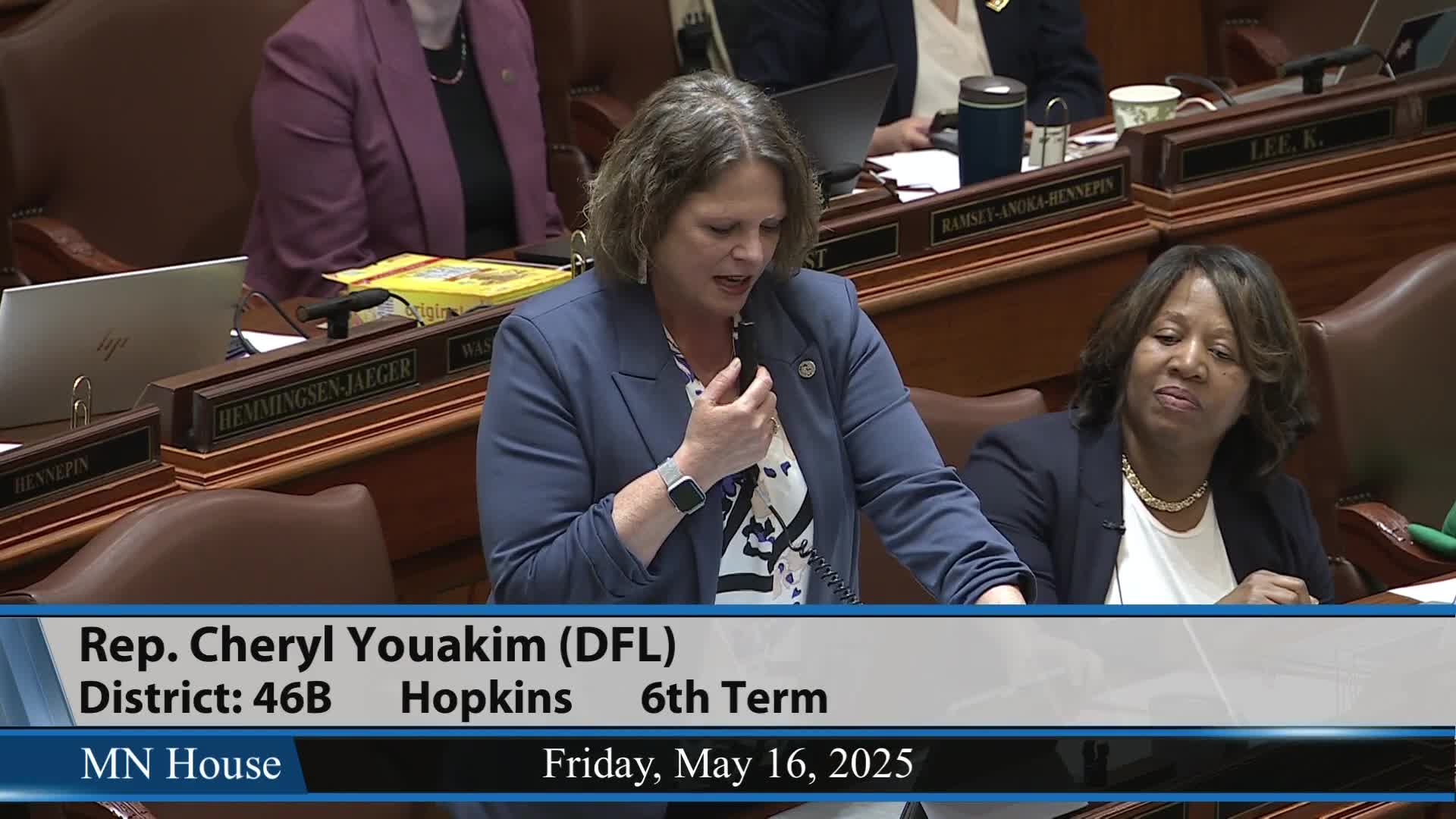Minnesota House advances education finance bill amid concerns over unemployment benefits cuts
May 18, 2025 | 2025 Legislature MN, Minnesota
This article was created by AI summarizing key points discussed. AI makes mistakes, so for full details and context, please refer to the video of the full meeting. Please report any errors so we can fix them. Report an error »

Minnesota's House Floor Session on May 16, 2025, yielded significant developments in education funding and policy, addressing pressing needs for school districts, teachers, and students. A key outcome of the session was the introduction of a bill aimed at enhancing funding flexibility for schools while maintaining the integrity of existing funding streams.
The bill includes provisions to link the general education funding formula to inflation, ensuring that school districts receive ongoing financial support that reflects rising costs. This measure is expected to provide greater stability and predictability for schools, particularly in light of recent federal funding cuts affecting various educational programs.
Despite these advancements, the session also highlighted challenges, particularly the decision to remove unemployment insurance benefits for school hourly workers after the summer of 2028. This decision has sparked concerns among lawmakers about the impact on these essential staff members, who play a crucial role in supporting students. Several representatives expressed hope that this issue could be revisited during the conference committee discussions.
Additionally, the session addressed the need for a comprehensive review of the compensatory aid formula, which has been criticized for failing to adequately support underprepared students. A task force will be established to evaluate and recommend changes to ensure that compensatory aid effectively meets its intended goals.
Other notable discussions included funding for various educational programs, such as the REED Act, which will distribute $40 million to schools based on enrollment, and the importance of maintaining base funding for the Minnesota Department of Education and related agencies.
As the session concluded, lawmakers emphasized the importance of collaboration and continued dialogue to address the challenges facing Minnesota's education system. The outcomes of this session are expected to have lasting implications for the state's schools, teachers, and students as they navigate an evolving educational landscape.
The bill includes provisions to link the general education funding formula to inflation, ensuring that school districts receive ongoing financial support that reflects rising costs. This measure is expected to provide greater stability and predictability for schools, particularly in light of recent federal funding cuts affecting various educational programs.
Despite these advancements, the session also highlighted challenges, particularly the decision to remove unemployment insurance benefits for school hourly workers after the summer of 2028. This decision has sparked concerns among lawmakers about the impact on these essential staff members, who play a crucial role in supporting students. Several representatives expressed hope that this issue could be revisited during the conference committee discussions.
Additionally, the session addressed the need for a comprehensive review of the compensatory aid formula, which has been criticized for failing to adequately support underprepared students. A task force will be established to evaluate and recommend changes to ensure that compensatory aid effectively meets its intended goals.
Other notable discussions included funding for various educational programs, such as the REED Act, which will distribute $40 million to schools based on enrollment, and the importance of maintaining base funding for the Minnesota Department of Education and related agencies.
As the session concluded, lawmakers emphasized the importance of collaboration and continued dialogue to address the challenges facing Minnesota's education system. The outcomes of this session are expected to have lasting implications for the state's schools, teachers, and students as they navigate an evolving educational landscape.
View full meeting
This article is based on a recent meeting—watch the full video and explore the complete transcript for deeper insights into the discussion.
View full meeting
